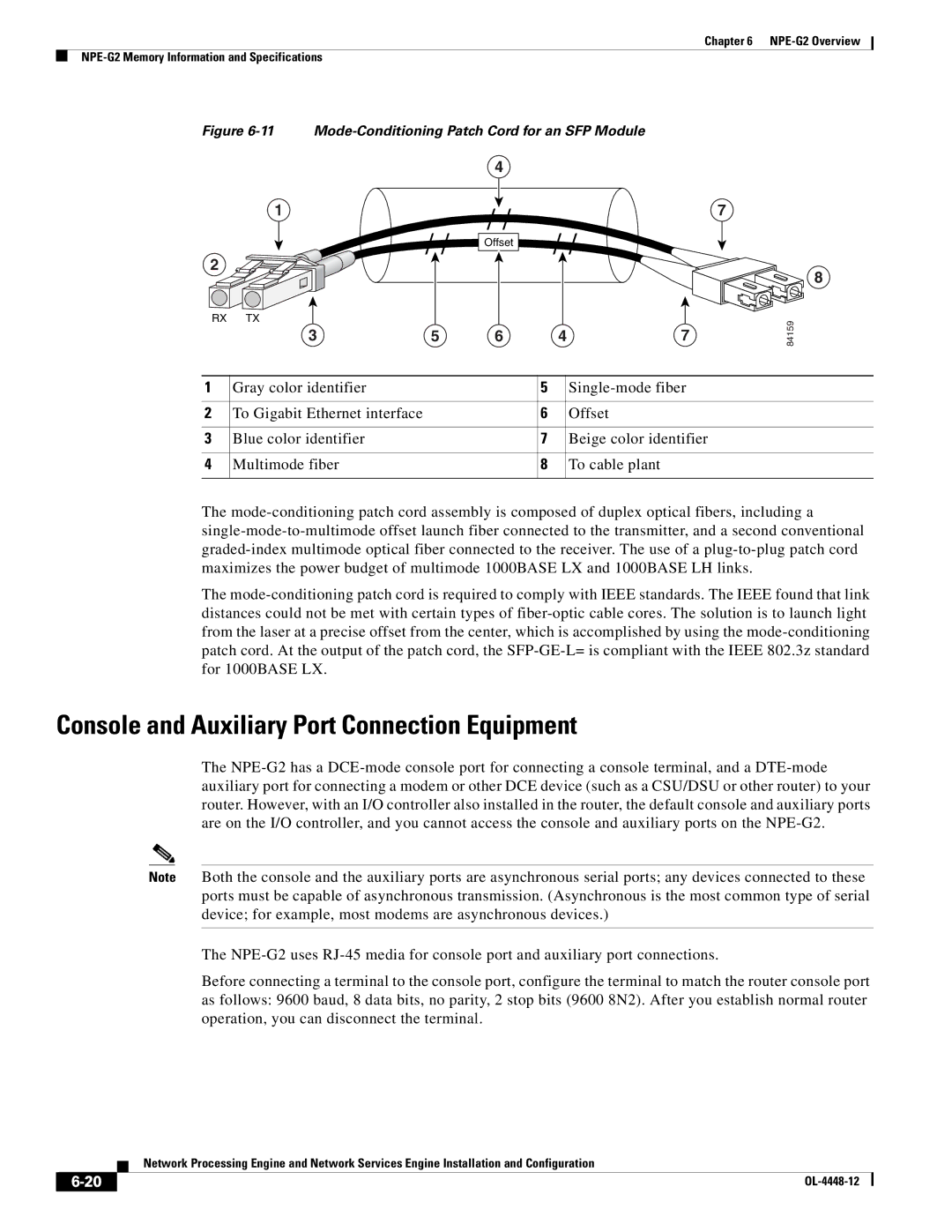
Chapter 6
Figure 6-11 Mode-Conditioning Patch Cord for an SFP Module
| 4 |
| |
1 | / / | 7 | |
/ / | / / | ||
Offset | |||
|
|
2
RX TX
3 | 5 | 6 | 4 | 7 |
8
84159
1 | Gray color identifier | 5 | |
|
|
|
|
2 | To Gigabit Ethernet interface | 6 | Offset |
|
|
|
|
3 | Blue color identifier | 7 | Beige color identifier |
|
|
|
|
4 | Multimode fiber | 8 | To cable plant |
|
|
|
|
The
The
Console and Auxiliary Port Connection Equipment
The
Note Both the console and the auxiliary ports are asynchronous serial ports; any devices connected to these ports must be capable of asynchronous transmission. (Asynchronous is the most common type of serial device; for example, most modems are asynchronous devices.)
The
Before connecting a terminal to the console port, configure the terminal to match the router console port as follows: 9600 baud, 8 data bits, no parity, 2 stop bits (9600 8N2). After you establish normal router operation, you can disconnect the terminal.
Network Processing Engine and Network Services Engine Installation and Configuration
|
| |
|
